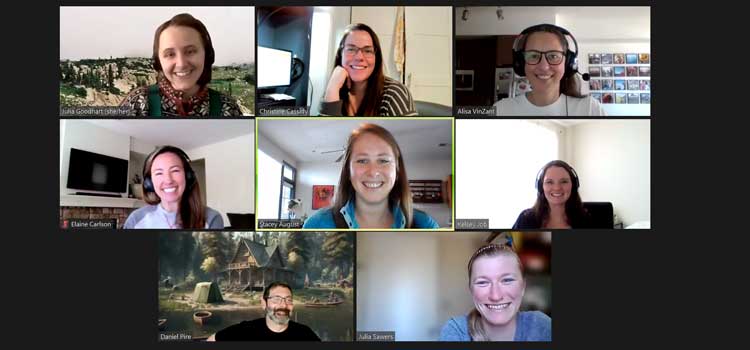Summer camps create a sense of community among campers and staff alike. In my previous role as an Assistant Camp Director, I’ve seen firsthand the positive impact that intentional camp design can have on campers. Camp Directors work hard to carefully identify opportunities to make the summer extra special and sweet. They come up with unique sports teams, identify round-robin opportunities, and develop community-building activities to create cohesive cabin groups. Each activity at camp, and the planning that goes into it, makes space campers and staff shine, grow, and form meaningful friendships.
This is such a significant part of camp design that Priya Parker, author of The Art of Gathering, was the keynote speaker at Campminder Camp 9. She explains the truth in what camp leadership already knows—immense impact can be generated by intentionally setting up the right environment with specific people for a defined purpose.

This type of environment is critical in my current role as a Client Success Manager at Campminder. In a recent training, our team learned how to create more inclusive environments. A key element we were asked to consider is the way we hold and run meetings. We explored how and why some participants may feel more or less comfortable in meetings and learned what we could do to create more inclusive environments. A few examples are:
- Participants don’t know why they’ve been invited to the meeting or what they’re expected to contribute
- Other people in the meeting seem to have had access to more context and time to think through the topic
- The meeting is run in a way that favors the most vocal or folks who ‘think quickly on their feet’
- One or two people do all of the talking
- One of a few people often interrupts others
- The meeting host only seems to care about getting 1-2 people’s input or buy-in
- It seems like the central decision at hand was already made at some point before the meeting
- Participants observe other people’s ideas or opinions being dismissed or shot down, which makes others nervous to share their own
The approach we take at Campminder now to achieve more inclusive meetings can work at camps as well. Try asking these questions:
- Can we improve how ideas are shared and decisions are made in staff meetings? Often when asking for ideas in a meeting, the first or most extroverted person to respond may get the most attention. If you do want to collect the most meaningful feedback or ideas from a specific team or meeting, share the question with everyone ahead of time so they have time to think and process the ask. This way, you can appeal to the entire camp community by hearing from a variety of sources.
- Is there a way to intentionally announce which meetings are solely for sharing updates and which meetings you will want participant input in? Design meetings at camp to either share information or ask for ideas and feedback and share these goals. This way, staff members can come prepared to share their perspectives.
- How are the highlights or ideas generated at the meeting being communicated to the staff members who weren’t able to attend? Camps have limitations on who can attend all of the meetings—someone has to be watching the campers, right? Coming up with a system that collects feedback from those staff members that weren’t there may be a way to create a more inclusive meeting environment.
- Can we improve how power dynamics play out in staff meetings? When people perceive others as having more power, privilege, or seniority than them, it changes the way they may show up to a meeting. Those with perceived power can take action to amplify their voices and create a safe space to participate. Having awareness of privilege allows meeting leaders to anticipate group dynamics and intentionally centers and amplifies the voices of those who do not have those privileges. You can alleviate some of this privilege by being clear to each participant about why they have been invited to a meeting and that you value their input and ideas.
There are many hierarchies that come into play at camps that provide support and structure for the community. Understanding the dynamics that these systems create can help your leadership team conduct inclusive meetings. For example, you may have different levels of leadership—head counselors, unit heads, programming coordinators, specialty staff, counselors, junior counselors, and more! You may have team members who work year-round, seasonal staff that returns season after season, first-year staff that has previously been campers, combined with brand new faces who have traveled across the world to be on your team.
Naming the power, privilege, and seniority and making space for team members with less perceived power to share ideas and provide feedback may help you create a more inclusive environment for meetings. After taking volunteer suggestions at a meeting, evaluate whether you have heard from the many different levels of leadership and segments of your staff. Decide whether you want to ask for opinions at the meeting or if it would be more appropriate to collect their feedback afterward. You will ultimately generate better ideas (creating more meaningful camp experiences) and more buy-in from your entire staff if they feel heard.
Camp Directors and leadership team members have the tools they need to create these extremely inclusive experiences, and camps can be the spark that changes the world. Starting with our camp staff and putting extra thought into each opportunity for inclusion is such an amazing opportunity for our community.
